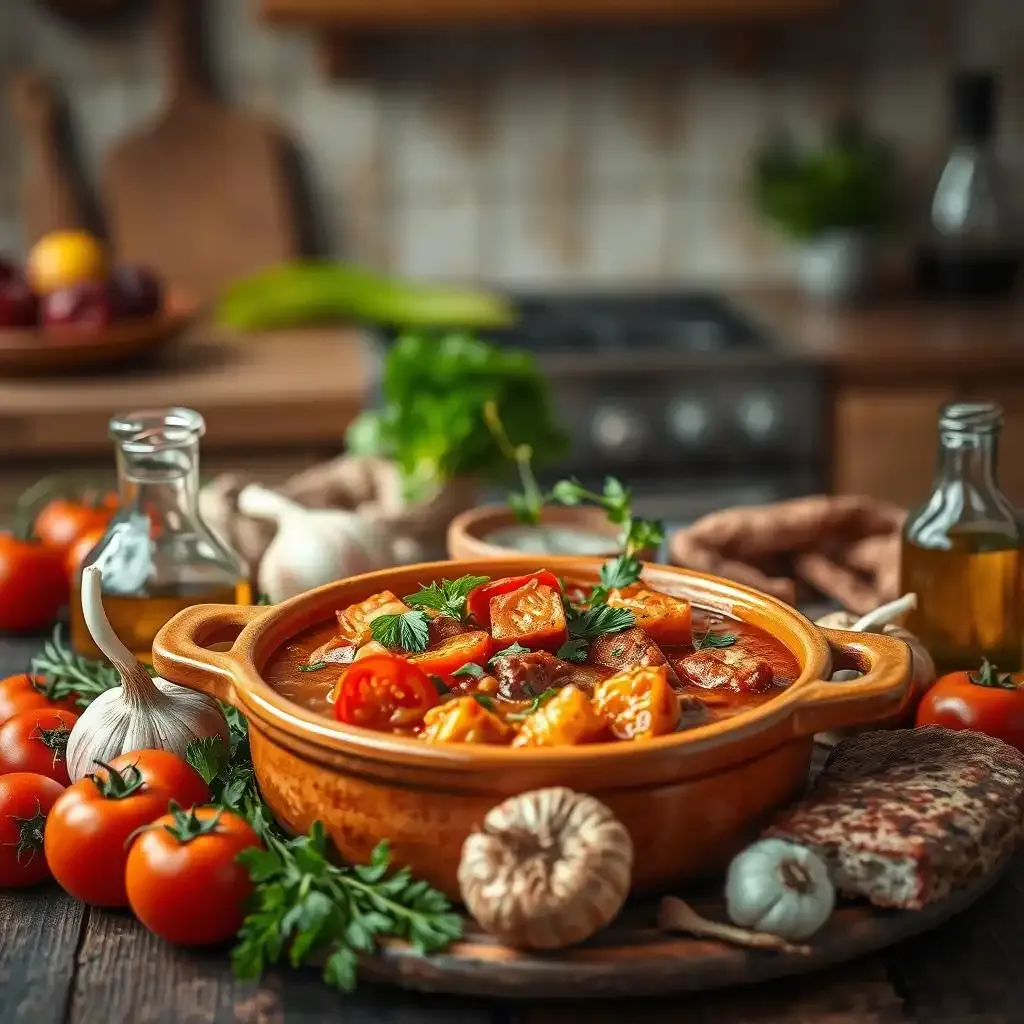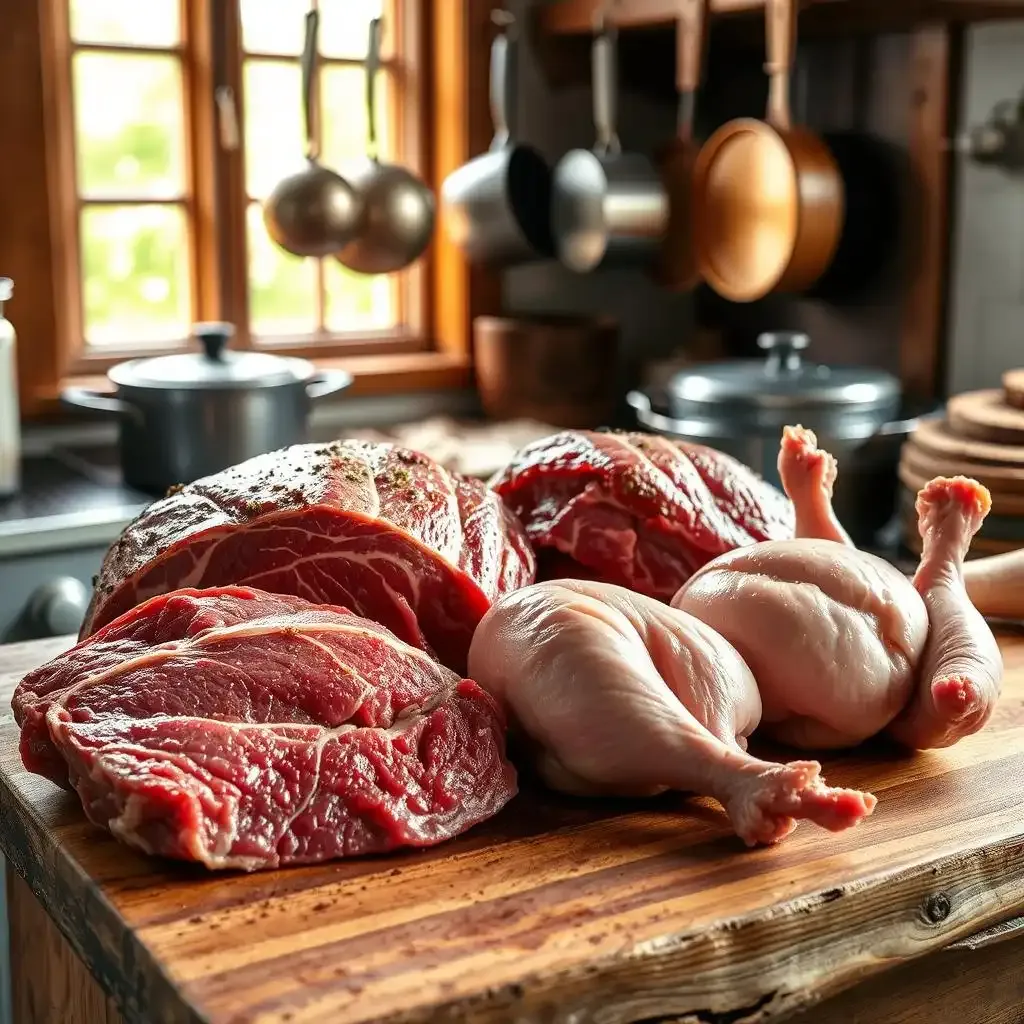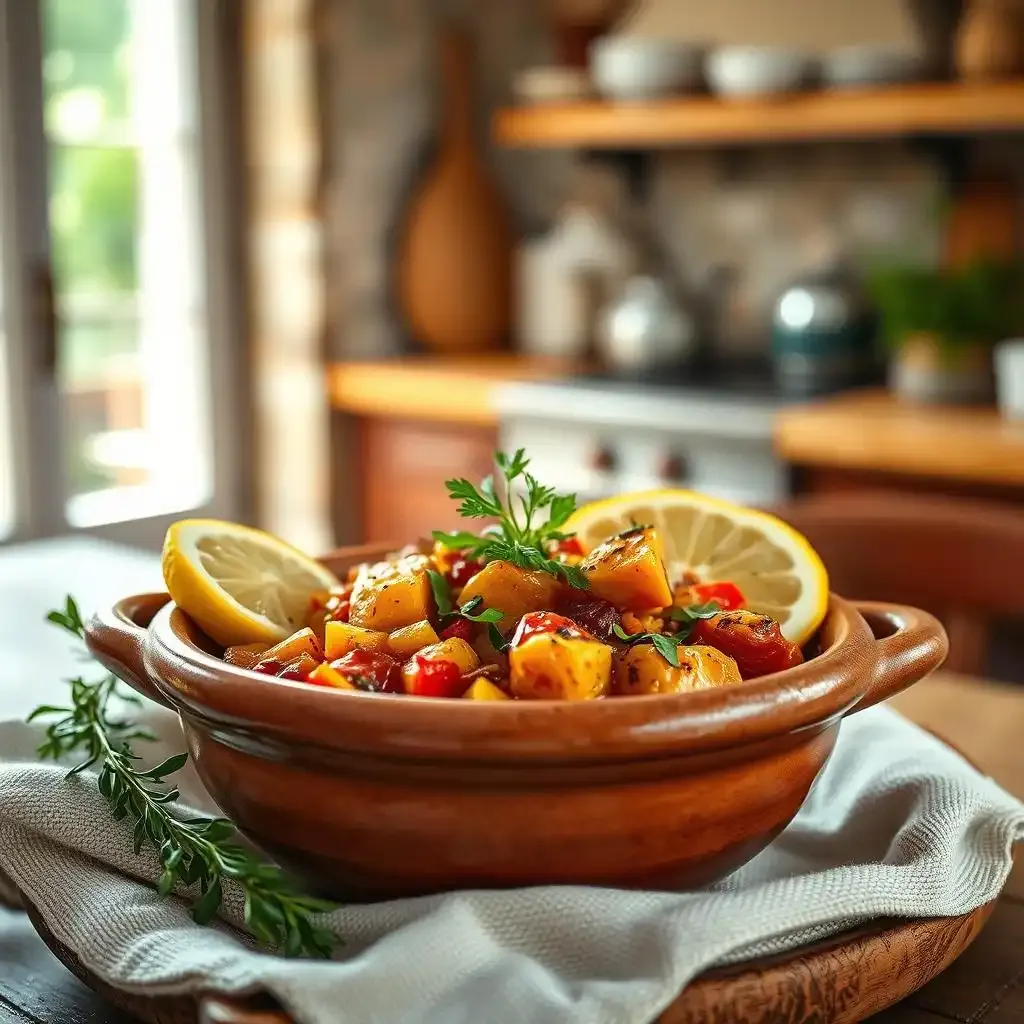Table of Contents
Are you ready to enhance your cooking game with Mediterranean flavors? If you've ever wondered how to create those rich, savory stews that burst with aromatic spices and tender ingredients, this guide is for you! Mediterranean stewing is an art form, blending simple yet potent techniques to transform everyday ingredients into something extraordinary. Whether you're a seasoned cook or just dipping your toes into the culinary world, this article will walk you through the essentials of Mediterranean stewing techniques, from selecting the right ingredients to mastering the perfect simmer. By the end, you'll be armed with the knowledge to craft hearty, flavorful stews that are sure to impress. So, grab your apron and let's explore into the heart of Mediterranean cuisine!
Overview of Mediterranean Stewing: Ingredients and Techniques

Overview Of Mediterranean Stewing Ingredients And Techniques
so you want to get into Mediterranean stewing? Great choice! This style of cooking is all about bringing bold flavors and comfort to the table. Think about this: a slow simmer of meat, veggies, and herbs, all cuddled together in a pot, just chatting it up and getting to know each other. The result? A hearty, soul-warming dish that’s as easy on the wallet as it is on the tastebuds. Let’s break it down!
Understanding the Basics of Mediterranean Stewing
Mediterranean stews are like the warm hug of the food world. They start with a simple base—usually onions, garlic, and tomatoes. Then, they layer in spices like oregano, cumin, and paprika, giving that signature Mediterranean zip. A key trick is using a mix of herbs; fresh herbs add brightness, while dried ones give depth. Plus, don’t skimp on the olive oil—it’s like the golden glue holding everything together. If you’re into texture, add some chickpeas or eggplant for a meaty-but-not-meat texture. And let’s not forget the star of the show—meat like beef, lamb, or chicken that’s been kissed by the grill or pan before stewing. This gives it that extra flavor pop! Maybe you’re wondering, "Can I make this vegetarian?" Absolutely! Just swap out the meat for more veggies or legumes. Easy peasy!
If you want something richer, you can check out our foie gras recipe for a taste of luxury. Or if you’re into dips, try our anchovy dip—it’s a perfect appetizer to start your meal off right!
Ingredient | Role | How It’s Used |
|---|---|---|
Tomatoes | Base | Adds acidity and depth |
Olive Oil | Flavor Enhancer | Lubricates and seasons |
Herbs | Flavor Profile | Provides freshness and aroma |
Essential Ingredients for Mediterranean Stews
Now, let’s talk about the players in our stew party. Meat is the MVP, but it doesn’t have to be just beef. Chicken or lamb can join the fun too. For veggies, we’re all about tomatoes, onions, garlic, carrots, and celery—classic combo! Don’t forget to throw in some herbs like rosemary, thyme, or bay leaves for that authentic Mediterranean flair. Oh, and don’t be shy with the spices! Cumin, paprika, and cinnamon are your magic dust—they’ll make your stew sing. If you’re feeling fancy, add a splash of red wine or vinegar for that tangy kick.
Wondering if there’s something missing? Maybe some dollops of feta or a drizzle of tahini? Absolutely! These little extras can take your stew from good to amazing. For more meaty goodness, check out our turkey roast recipe, or if you’re in the mood for something fishy, try our French fish pie.
- Meat: Beef, lamb, chicken
- Veggies: Tomatoes, onions, carrots
- Herbs: Rosemary, thyme, bay leaves
- Spices: Cumin, paprika, cinnamon
- Add-ins: Feta, olives, chickpeas
Techniques to Improve Your Mediterranean Stew
Alright, you’ve got your ingredients; now let’s talk technique. First off, always cook your meat a bit before adding it to the stew. This Browning gives it a nice color and loads of flavor. Once it’s in, you simmer on low heat—that’s where the real magic happens. The low and slow method lets all the flavors mingle and the meat become tender as can be. Don’t rush it; good things come to those who wait!
If you’re looking for more cooking inspiration, check out our fancy French cuisine section—it’s packed with delicious ideas. Or if you want to get into the weeds, our potato pancake recipe is a great way to enjoy some comfort food with a twist!
So there you have it—a crash course in Mediterranean stewing. It’s all about balance, patience, and letting your ingredients do the talking. Go ahead, put on your apron, and let’s get stewing!
Selecting and Preparing Meats for Stewing

Selecting And Preparing Meats For Stewing
Hello there, cooking buddy! Today, we're going to talk about how to pick the best meats for your Mediterranean stew and get them ready for the big show. Imagine you're casting actors for a play—each part needs the right person to shine, right? That's kind of how selecting meat for your stew works!
Picking the Perfect Cut
You want your stew to be tender, juicy, and flavorful, right? Well, the key is choosing the right cut of meat. Cuts like chuck roast, lamb shoulder, or chicken thighs are your best friends here. Why? Because they're full of connective tissue that melts into collagen during cooking, making everything super tender and packed with flavor. It's like giving your meat a backstage pass to become the star of the show!
DON'T: Use lean meats like sirloin or chicken breast—they get dry when stewed. Think of them as divas who don't want to share the spotlight. And DON'T: Go for frozen meat unless you've thawed it properly. Treat your meat right, and it'll treat you right!
Meat Type | BEST FOR | WHY? |
|---|---|---|
Beef Chuck Roast | Rich, hearty stews | Full of flavor and becomes super tender |
Lamb Shoulder | Spicy, aromatic dishes | Infused with Mediterranean herbs |
Chicken Thighs | Lighter, family-friendly meals | Moist and flavorful |
Getting Your Meat Ready for Its Close-Up
Alright, you've picked your perfect meat. Now, it's time to get it camera-ready! Start by rinsing your meat under cold water and patting it dry with paper towels. This is like giving it a spa treatment to remove any unwanted guests (like bacteria). If you're using spices, rub them into the meat like giving it a massage—it'll thank you by being extra tasty. Don't forget to season it well with salt and pepper. They're the unsung heroes of flavor!
- Pat dry with paper towels
- Seasoning is your best friend
- Sear it for extra flavor and color
And if you're looking to add some sophistication to your next meal, why not check out our guide to making —it's a fancy way to impress your friends and family. Speaking of impressing, if you want to start with something smaller, our is a great appetizer to get the party started!
StepbyStep Guide to Creating a Flavorful Mediterranean Stew

Stepbystep Guide To Creating A Flavorful Mediterranean Stew
Alright, let’s investigate into the nitty-gritty of making that Mediterranean stew of your dreams! So, first things first, you need to gather your ingredients. Think of this like building a LEGO set—the more pieces you have, the more awesome your final creation will be. And hey, if you're looking for some inspiration, check out how to make rose petal jam—it’s a sweet way to explore Mediterranean flavors!
Start by chopping your veggies. Onions, garlic, carrots, and celery are your MVPs here. Sauté them in a bit of olive oil until they’re nice and soft—this is where the magic begins. Add some spices like cumin, paprika, and a pinch of cinnamon. Trust me, these guys will give your stew that warm, inviting kick. And don’t forget a squeeze of fresh lemon juice—it’s like adding a little sunshine to your pot!
Ingredient | Quantity | Why It’s Important |
|---|---|---|
Onions | 2 medium | Adds natural sweetness |
Carrots | 3 medium | Brings earthy depth |
Garlic | 4 cloves | Infuses flavors |
Next, it’s time to introduce the star of the show—your meat. Whether it’s beef, lamb, or chicken, make sure it’s well-seasoned with salt, pepper, and your favorite herbs. Here’s a pro tip: sear the meat in a hot pan before adding it to the stew. This gives it that perfect golden-brown crust, making it taste like it’s been kissed by the gods of flavor. If you’re curious about more meaty goodness, check out how to make a !
Once everything is in the pot, pour in your liquid—this could be beef broth, red wine, or a combo of both. Let it simmer on low heat, giving it a gentle stir every now and then. This is where patience pays off—it’s like letting the flavors have a dance party, and you’re the DJ! Let it cook for at least an hour, or until the meat is tender and the veggies are soft. And remember, a little olive oil is like magic—it keeps everything from drying out and adds that extra kick of flavor.
If you’re feeling adventurous, throw in some chickpeas or eggplant for a meat-free option. You can even drizzle a bit of olive tapenade on top for an extra burst of Mediterranean flair. Trust me, your taste buds will thank you!
Alright, you’re almost there! Once everything’s cooked to perfection, it’s time toategather!
- Chop veggies and sauté until soft
- Add spices and a squeeze of lemon
- Sear meat and add to the pot
- Pour in liquid and simmer on low heat
- Cook until meat is tender and veggies are soft
And there you have it—a delicious, hearty Mediterranean stew that’s as nutritious as it is flavorful. It’s like giving your味蕾 a vacation without leaving the kitchen! Enjoy your masterpiece!
Tips for Perfecting Your Mediterranean Stew
Ah, the Mediterranean stew—your trusty comfort in a pot. But let's be honest, even the most seasoned chefs sometimes hit a snag. Whether it's meat that's tough as a boot or flavors that feel more like aspoiler than a symphony, there's always room for improvement. Here's how to turn your stew from a so-so dish to a showstopper!
The Secret to Juicy Meat
Mouthwatering meat is the crown jewel of any stew. But how do you get that melt-in-your-mouth tenderness? The trick is all in the technique. First, always sear your meat in a hot pan before chucking it into the pot. This golden-brown crust is like a protective coat, locking in moisture and flavor. No searing means sad, dry meat. Trust me, it's like the difference between a crisp jacket potato and a soggy one!
You’re probably wondering, "But how long should I simmer?" Ah, patience is key here. Let it sit on low heat for at least an hour, preferably two. That's where the magic happens—connective tissues melt, and the meat absorbs all the yummy goodness from the veggies and spices. If you're short on time, check out our section for speed-cooking hacks!
Cooking Time | Type of Meat | Tip |
|---|---|---|
45-60 minutes | Chicken | Keep the lid on tight to trap steam and moisture |
1.5-2 hours | Beef or Lamb | Low and slow, just like grandma used to say |
2-2.5 hours | Pork | Add a splash of red wine for extra depth |
Flavor Balance: Less is Sometimes More
Ever had a stew that tasted like a spice explosion? It’s not pretty. The key to greatness is all about balance. Start with a pinch of salt, not a shovel. You can always add more, but you can’t take it away. Herbs like rosemary and thyme are your best friends—they add freshness without overwhelming the dish. Don’t skip the lemon juice either; it’s like a wake-up call for your flavors!
Foie Gras recipe for tips on balancing rich and bold flavors!
- Add salt gradually
- Herbs are your friends
- Finish with fresh lemon juice
- Adjust as you go!
With these tips in your back pocket, you're ready to tackle any Mediterranean stew like a pro. Remember, cooking is all about practice and patience. So don your apron, grab your wooden spoon, and let’s get to stewing!
Mastering Mediterranean Stew
Mediterranean stewing is more than just a cooking method—it's a celebration of bold flavors, generous spices, and the art of patience. By selecting the right ingredients, preparing your meats thoughtfully, and simmering with care, you can create stews that are both comforting and exciting. Experiment with different herbs, spices, and proteins to make each batch uniquely yours. With these Mediterranean stewing techniques, you're well on your way to becoming a master of the stew pot. Happy cooking!